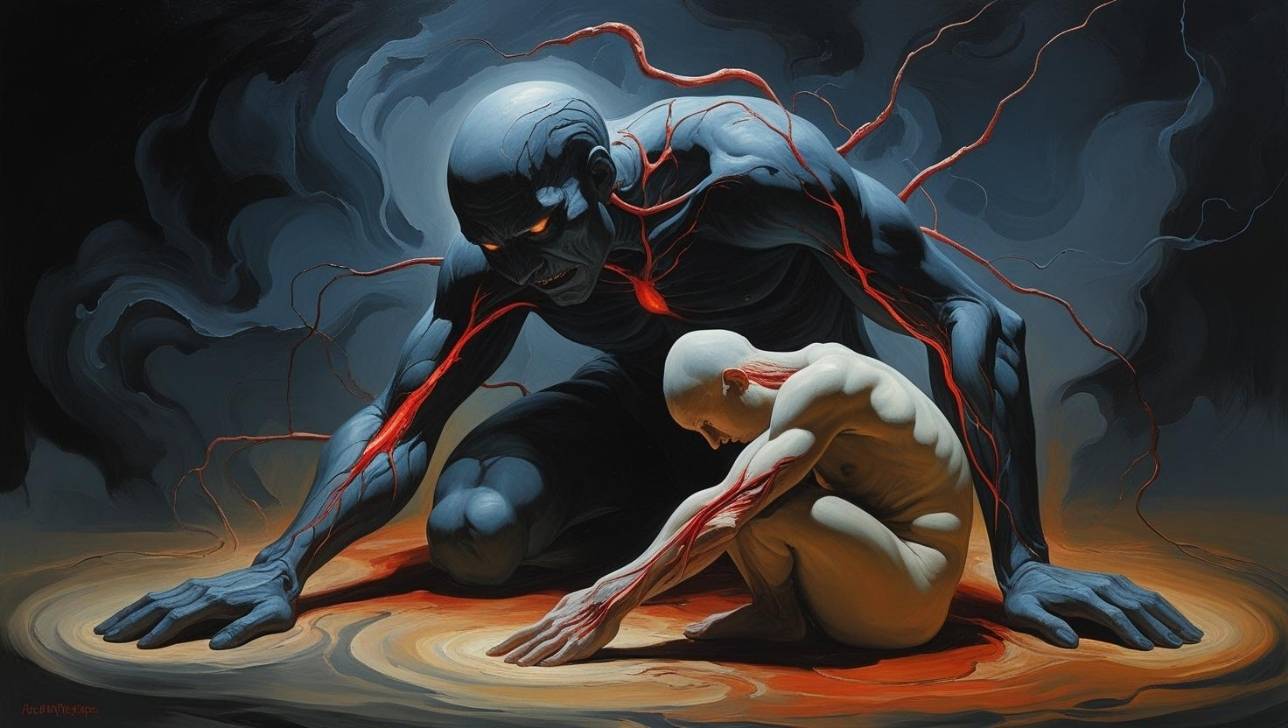Understanding the Complexities of Neuropathy: Why Chronic Pain Persists Despite Treatment
Neuropathy can feel like a relentless adversary, with pain persisting despite various treatments. Understanding the complexities behind chronic pain in neuropathy is crucial for anyone seeking relief. Let’s delve into why chronic pain continues to plague those suffering from neuropathy and explore potential solutions.
What Causes Neuropathy?
Neuropathy refers to damage to the peripheral nerves, often resulting in pain, weakness, and numbness. It can stem from several causes including diabetes, autoimmune diseases, infections, and even certain medications. Each cause affects the nervous system differently, complicating the treatment process.
Common Symptoms
The symptoms of neuropathy can vary widely but typically include:
- Pain, often described as sharp, throbbing, or burning
- Numbness or tingling sensations
- Weakness in muscles
- Sensitivity to touch
Why Does Chronic Pain Persist?
Chronic pain in neuropathy can persist due to multiple factors:
- Incomplete Diagnosis: Accurate diagnosis is critical. If the underlying cause of neuropathy isn’t correctly identified, treatment may be ineffective.
- Complex Nerve Damage: Nerve damage can be intricate, affecting different types of nerve fibers (sensory, motor, autonomic) in varying degrees.
- Variable Response to Treatments: What works for one person might not work for another. This variability makes finding effective treatments challenging.
- Psychological Factors: Anxiety, depression, and stress can exacerbate pain perception, making it seem more intense.
Treatment Approaches
Several treatment approaches can help manage neuropathy pain:
- Medications: Antidepressants, anticonvulsants, and pain relievers are commonly prescribed.
- Physical Therapy: Exercises can strengthen muscles and improve mobility.
- Alternative Therapies: Acupuncture, massage, and biofeedback can offer relief.
- Lifestyle Changes: Managing blood sugar levels, quitting smoking, and maintaining a healthy diet can also help.
Case Study: John’s Journey
| Stage | Description | Treatment | Outcome |
|---|---|---|---|
| Initial Diagnosis | John was diagnosed with diabetic neuropathy. | Prescribed gabapentin and physical therapy. | Pain slightly reduced but still persistent. |
| Second Opinion | Consulted a neurologist for a second opinion. | Adjusted medication to include duloxetine and added acupuncture. | Significant improvement in pain management. |
| Long-Term Management | Integrated lifestyle changes, regular check-ups, and continued therapy. | Maintained medication, continued physical therapy, and monitored blood sugar levels closely. | Significantly improved quality of life with manageable pain. |
Living with Neuropathy
Living with neuropathy requires patience and persistence. Regular consultations with healthcare providers, adherence to treatment plans, and open communication about symptoms are key. Support groups and counseling can also provide emotional support and coping strategies.
Future Outlook
Research into neuropathy is ongoing, with new therapies and technologies emerging. Stem cell therapy, gene therapy, and advanced imaging techniques hold promise for better diagnosis and treatment. Staying informed about these developments can empower patients to advocate for themselves effectively.
Final Thoughts
Chronic pain in neuropathy is a multifaceted challenge, but understanding its complexities can lead to more effective management. By working closely with healthcare professionals and exploring various treatment options, many people find significant relief and improved quality of life.
✅ “Support Your Nerve Health Naturally – Shop Nerve Fresh Now!”
Unveiling the Invisible Symptoms: Living with Neuropathy Beyond Pain Management
Living with neuropathy can be a challenging journey, often marked by more than just the relentless pain. Neuropathy affects millions of people worldwide, causing damage to the peripheral nerves that send signals between the brain, spinal cord, and the rest of the body. While pain is a common symptom, there are numerous other invisible struggles that individuals face, which are less talked about but equally debilitating.
One of the most overlooked aspects of neuropathy is the impact on daily activities. Simple tasks like buttoning a shirt, tying shoelaces, or even walking can become daunting. For many, these seemingly minor actions can trigger intense discomfort or require significant effort. Understanding the full scope of how neuropathy impacts daily life is crucial for both patients and healthcare providers.
Understanding the Invisible Symptoms
Neuropathy symptoms extend beyond pain and can manifest in various ways:
- Muscle weakness: Many individuals experience muscle weakness, leading to difficulty in performing routine activities.
- Numbness: Numbness in the extremities can make it hard to feel sensations, increasing the risk of injuries due to lack of awareness.
- Balance issues: Coordination problems can lead to frequent falls and accidents.
- Sensory changes: Some may experience hypersensitivity to touch or temperature changes, making everyday interactions uncomfortable.
The Emotional Toll
The emotional and psychological impact of living with neuropathy cannot be understated. Chronic pain and the constant struggle with daily activities can lead to depression, anxiety, and a sense of isolation. Many individuals feel misunderstood, as their condition is not visibly apparent, leading to feelings of frustration and helplessness.
Support Systems and Coping Strategies
Building a strong support system is essential for managing the challenges of neuropathy. This includes family, friends, and healthcare professionals who understand the complexities of the condition. Additionally, adopting coping strategies such as mindfulness, physical therapy, and occupational therapy can significantly improve quality of life.
| Coping Strategy | Description |
|---|---|
| Mindfulness | Practicing mindfulness techniques like meditation can help manage stress and pain levels. |
| Physical Therapy | Regular sessions with a physical therapist can strengthen muscles and improve mobility. |
| Occupational Therapy | An occupational therapist can provide tools and strategies to perform daily tasks more effectively. |
Advocacy and Awareness
Raising awareness about the invisible symptoms of neuropathy is vital. By sharing personal stories and experiences, individuals can help others understand the multifaceted nature of the condition. Advocacy efforts can also drive research and development of new treatments, ultimately improving outcomes for those affected.
Living with neuropathy requires a holistic approach that addresses both physical and emotional needs. By acknowledging the full spectrum of symptoms and providing comprehensive support, we can help individuals navigate their journey with greater resilience and hope.
It’s important to remember that each person’s experience with neuropathy is unique. Tailored treatment plans and personalized care can make a significant difference in managing symptoms and enhancing overall well-being. If you or someone you know is struggling with neuropathy, consider reaching out to a healthcare provider for guidance and support.
✔ “A Natural Way to Soothe Nerve Discomfort – Learn More About Nerve Fresh!”
Conclusion
Navigating the journey of neuropathy can feel like an endless struggle, especially when pain persists despite treatment. Understanding the complexities behind chronic pain is crucial; it’s not just about addressing the symptoms but recognizing the multifaceted nature of neuropathy. By acknowledging invisible symptoms beyond pain management, we can better support those affected. It’s important to remember that living with neuropathy involves more than just enduring physical discomfort—it encompasses emotional, social, and lifestyle challenges. Seeking comprehensive care that includes medication, physical therapy, and psychological support can significantly improve quality of life. As awareness grows, so does the potential for better management and understanding. Together, we can work towards easing the burden of neuropathy and providing the compassionate care needed for those navigating this challenging path.


